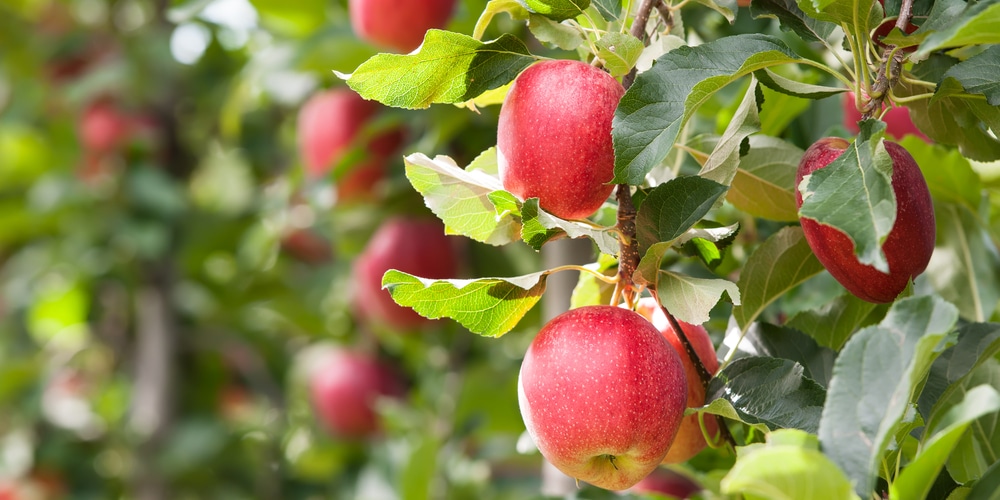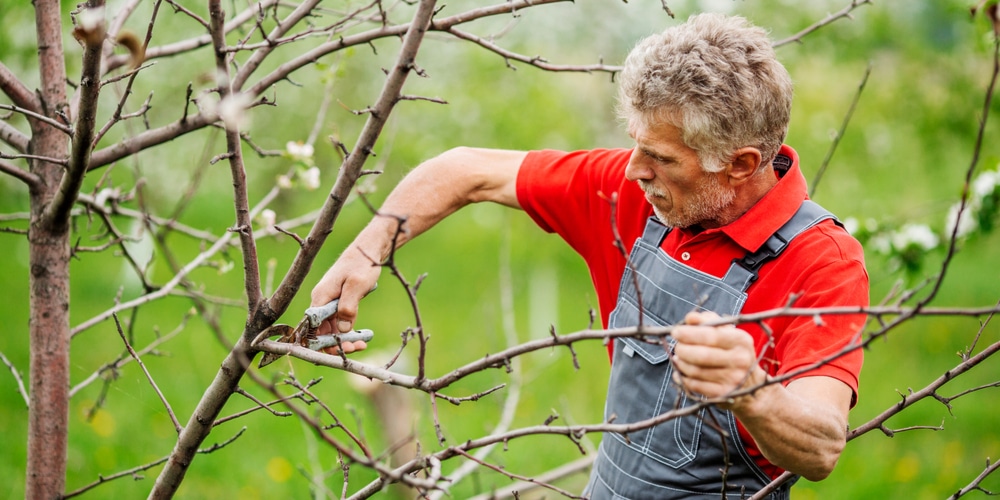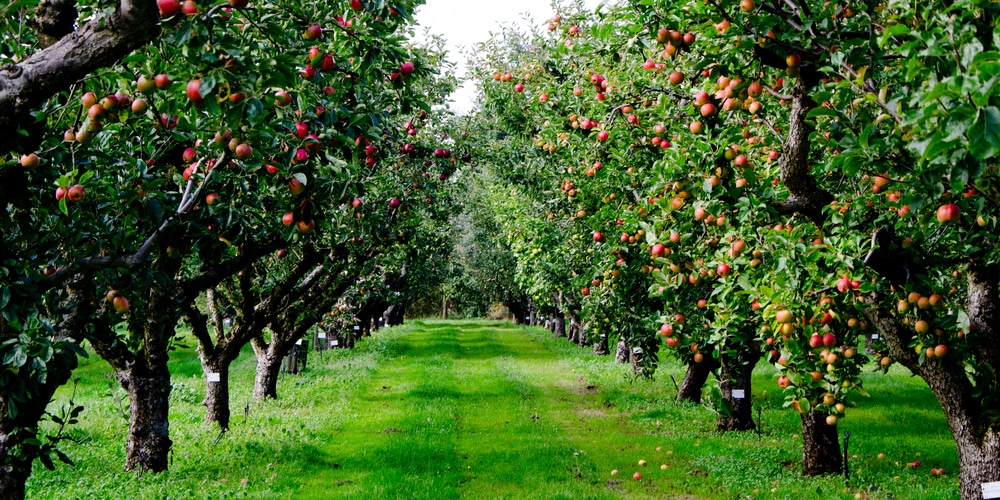Most apple varieties prefer mild climates where winter temperatures go around or below freezing. California’s conditions are more similar to the Mediterranean region, with hot and dry summers and not-so-cold winters. You get less than 600 chilling hours here, meaning you must pick the proper apple varieties that will thrive in this type of weather. Besides, if you want to improve your chances of successfully growing healthy apples in your Californian garden, you must learn when to prune apple trees in California.
Quick Answer:
In California, the best time of the year to prune your apple trees is during the dormant season. Usually, that falls between December and mid-February

Indeed, the process allows you to control and maintain the size of your tree, ensure optimal airflow to prevent the spread of diseases, and secure rich fruit production. Doing so at the proper time of the year makes a difference in the results. Keep reading this essential guide to learning it all about pruning apple trees in your region.
Here, we also included a list of the best apple trees to grow in California. If you are still thinking about planting one of these stunning fruit trees in your yard, you might need some inspiration. Get it from our essential guide!
When to Prune Apple Trees in California
Before getting to when you should prune your apple tree, let’s quickly go over why pruning is a crucial step in taking care of your fruit trees. The process stimulates new fruiting growth, removes dead and unhealthy branches, creates more space for fruits to mature healthily, and improves sun penetration. While pruning is relevant at all stages, it is crucial during your tree’s first three years of life.
In California, the best time of the year to prune your apple trees is during the dormant season. Usually, that falls between December and mid-February. Winter is the best time to trim your trees because it will create space to produce new growth in the spring. Because trees need healing after pruning, doing so when they are dormant prevents them from getting attacks from bugs and diseases. In winter, most of them will not be around, which allows your tree all the time it needs to recover without suffering external damages.
Apple trees can produce fruits for about twenty years if you give them what they need to thrive. Fruits grow on short spurs that form near the bases of new branches. When pruning, avoid removing them as you might stunt production. Instead, remove weak or dead branches. Avoid over-pruning your apple tree, as that might lead to leafy branches without flowers or fruits.
What Varieties of Apple Trees Can You Grow in California?
When it comes to planting an apple tree in California, you must choose varieties that don’t mind growing with fewer chill hours. In this section, you’ll get to learn about what species you can plant in your garden.
Granny Smith
Granny Smith apple tree is among the best varieties for California. The plant produces medium-sized fruits with firm skin and a tart but sweet taste. These trees do best in mild winters and are suitable for California’s climate. This variety is not too fussy about soil and sunlight and is self-pollinating: you only need one tree to ensure production. Place it under partial shade and in well-drained soil for best results.
Spitzenburg
Spitzenburg is an aromatic apple variety that performs well in California’s climate. However, it is slightly more challenging to care for than other apple trees. Indeed, Spitzenbers has poor disease resistance: pruning will be crucial in maintaining your tree healthy.
Cripps Pink
This variety is native to Australia and well-suited to California. Cripps Pink likes warm summers and has low winter-chill requirements. Plus, it doesn’t mind dry conditions, making it perfect for growing in hotter regions. With proper care, you’ll be able to enjoy prosperous harvests without much effort.
Gold Rush
Gold Rush is another variety that you can grow even in the Southern parts of California. It is a versatile tree that blooms late and requires cross-pollination to bear fruits.
To boost production, consider planting it next to plants that attract pollinators. Plus, because summers can get very hot in your region, place your tree under partial shade for best results. You may have to keep an eye out for fungal infections. The gold rush is resistant to most pests but is susceptible to apple rust in the Southern regions.
If you are looking to do a lot of gardening in CA this year, here are our California-specific planting guides for tomatoes, potatoes, and garlic. Good luck triming your apple tree!

